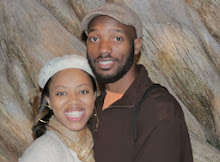Day 5: Setting Goals
Here is my view of goals. If I do
not set them, how will I know I have accomplished them? How will I know what I
am striving for? I cannot properly assess if my boys know what I want them to
know if I do not first determine what I want them to know. :-)
I usually write them in the form of a letter so once it's all said it done, they will have 13 letters from me to track their progress as children. (I always try to make thing personal when I can.)
How do I determine goals?
I
normally pull from 7 different areas (that I have formed into questions):
1. What is God telling me they need to know, learn, be exposed to, or
mature in?
When I pray over my sons, I walk
away with a “knowing” of some things that I know I need to give them.
For example, my oldest son needs
to practice becoming a better leader. My youngest son copies everything he
does. If I want to make sure they both grow up with certain qualities, I better
instill it in my oldest pretty well.
2. What do I and/or
their father want them to know, learn, be exposed to, or mature in?
As parents, we just have desires for them and because of that;
I make sure I include them in our yearly goals.
For example, I really want my sons to learn their Books of
Bible. God is not telling me to do that (though I am sure He is not against it)
and their curriculum doesn’t suggest it either. It is purely something that I
want them to learn; so they will learn it.
3.What did they
struggle in last year, or currently?
For whatever reason, my son has
issues with clock terminology. He can tell time but he doesn’t have a full understanding
of “quarter to” and “half past.” We will review it again this year, because I believe
it’s a skill he should have; therefore it is goal…again…this year.
4. What are they
interested in? Gifts/talents?
I have one son strongly gifted in
art and the other in music. I want to make sure that I set goals for them in
these areas so I do not forget and so I can expose them to the culture of their
talents in different ways. If I do not write it down I will not research it. If
I do not research, it will never happen. Sure, I may stumble over something throughout
the years. But I desire for my parenting to be on purpose and not something
that falls into my lap.
5. What do they need to
have in order to do something they want to do (or I want them to do?)
Thankfully, all four of us want
the boys in sports! My husband and I agree on which sports they are allowed to
play at certain ages. At their current ages, basketball wins; and no one
objects! (Yay!) However, in order to play basketball well (or any team-based
sport, for that matter) the boys must learn teamwork. Because we want them to play, we need to
teach them teamwork and I need to set it as a goal.
6. What should “typical”
kids their age/grades know about or be able to do?
Do not go crazy here. Every child
is different, yet every child is the same. I know it sounds like an oxymoron,
but truthfully no one child is alike and we also know that most children
develop and are ready to handle certain tasks/responsibilities in like
ages/stages. That begs the question, “what can most seven year olds do, then?” (or however old the child in question is...) After I pray, connect with other moms, and
complete some mild research I make a list of things I’d like to work on for the
year.
I know that many 7 years old are
ready to transition to some type of silent reading (among others things). I set
this as a goal so he strives well amongst his peers.
7.What does their
curriculum suggest they will learn by the end of the year? (If your kids are in public school, you may ask: What does their standards suggest they will learn?
I take a quick peek at the table
of contents, scope and sequence, and some sample lessons to see what the
curriculum will offer. If it says, “learns division facts to 5” I want to make
sure we practice these facts so he knows this prior to completing that grade. I
set it as a goal as well.
Afterward, I group the goals
together and type up a master list of the year
You can click below to view our goals lists for Kinder and 3rd grades:
Blessings,
Joyice, The Writing Enhancer




















